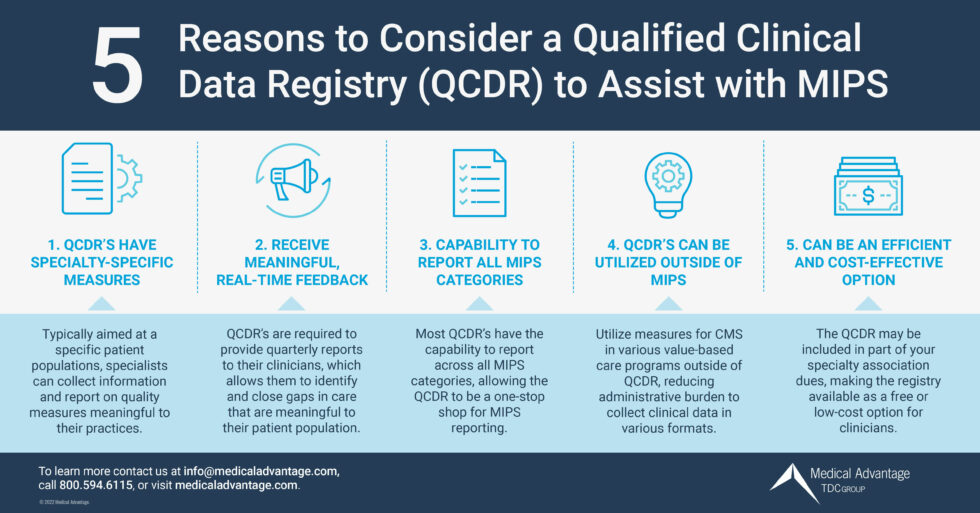If you are familiar with, and have been participating in, the Quality Payment Program, via the Merit-based Incentive Payment System (MIPS), then you most likely are aware of the significant updates to MIPS for the 2022 performance year. These changes are likely to have an impact on provider scores and associated payment adjustments. With the increasing complexity of the program, including; topped-out measures, removal of End-to-End Electronic bonus points and high-priority bonus points, and the ever increasing Performance Threshold (PT) of 74 points, you may need to start thinking outside the box to maximize your score, or even just to avoid a penalty for the 2022 Performance Year (PY) and beyond.
With that being said, it may be time to explore your quality measure collection method. Most clinicians are familiar with collecting their Quality data through Medicare Part B Claims, eCQM’s (typically through your EHR) or MIPS CQM (typically through a registry). But what about using a Qualified Clinical Data Registry (QCDR)? In this article, we’ll explore this collection method and some of its benefits.
What is QCDR?
According to the Centers for Medicare & Medicaid Services (CMS), a Qualified Clinical Data Registry (QCDR) is a CMS- approved vendor that is in the business of improving health care quality by collecting clinical data on behalf of clinicians for data submission. Typically, a QCDR is established by a specialty society, large health system, or software vendor. Unlike a traditional Clinical Data Registry, a QCDR can develop its own quality measures for CMS approval. Let’s explore five5 reasons to utilize a QCDR for MIPS reporting:
1. QCDR’s Have Specialty- Specific Measures
Because QCDR’s can generated from specialty societies and have the ability to develop and propose new measures to CMS for approval, they are typically aimed at a specific patient population, that most existing quality measures do not encompass. Therefore, specialists can collect information and report on quality measures that are meaningful to their practices.
2. Receive Meaningful, Real-time Feedback
QCDR’s are required to provide quarterly reports to their clinicians, which allows them to identify and close gaps in care that are pertinent and meaningful to their patient population. Although the minimum requirement is quarterly, some QCDR’s also have the capability to run real-time, daily reports, allowing you to immediately take action for improvement if necessary.
3. Capability to Report All MIPS Categories
Most QCDR’s have the capability to report across all MIPS categories, including quality, Improvement Activities, and Promoting Interoperability, allowing the QCDR to be a one- stop shop for MIPS reporting. This gives you, the clinician, an option to aggregate multiple types of data ranging from claims to information from your EHR, and other systems.
4. QCDR’s Can Be Utilized Outside of MIPS
QCDR’s also can help collect and organize data beyond MIPS. The measures that can be submitted for approval to CMS can be utilized in various value-based care programs outside of QCDR, reducing your administrative burden to collect clinical data in various formats.
5. Can Be an Efficient and Cost-Effective Option
Because most QCDR’s are part of specialty associations, the QCDR may be included in part of your dues, making the registry available as a free or low-cost option for clinicians. Also, because many of the QCDR’s are run by specialty associations, the association and QCDR support can be robust for specialty specific assistance and guidance, unlike generic assistance provided through other vendors.

Are you taking full advantage of your participation in…
- MACRA / QPP / MIPS
- CPC+ and Primary Care First
- Alternative Payment Model (APM) Participation
- Patient Centered Medical Home (PCMH)
- Healthcare Effectiveness Data and Information Set (HEDIS)
- Commercial Programs
- Medicare Stars
Medical Advantage’s consultants can help you get the most out of your organization’s performance in these areas and more.





